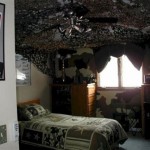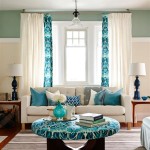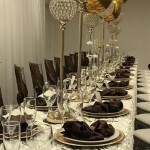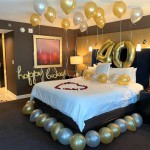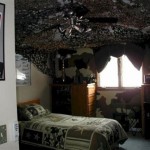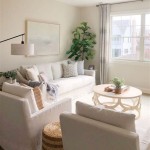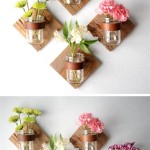Decorating Ideas for Living Room Entertainment Center with TV
The entertainment center, often anchored by a television, serves as a focal point in many living rooms. Strategic decorating can enhance the aesthetic appeal of this area, seamlessly integrating the technology with the overall design of the space. Careful consideration of elements like shelving, lighting, color palettes, and accessories is crucial in creating a visually appealing and functional entertainment center.
Balancing functionality with aesthetics is paramount. The entertainment center needs to adequately house media equipment, provide storage, and present a cohesive visual that complements the living room's existing style. Ignoring these factors can result in a space that feels cluttered, disorganized, or visually jarring, undermining the room's overall design intention.
The following are several key points to consider when decorating a living room entertainment center featuring a television.
Camouflaging and Integrating the Television
The television, while necessary, can sometimes visually dominate a space. Effective decoration techniques aim to minimize this dominance and integrate the television more effectively into the overall design scheme. One approach involves using dark paint or wallpaper on the wall behind the television. A dark backdrop helps the television blend in, reducing its visual contrast and making it less of a focal point when not in use.
Another tactic is to surround the television with decorative elements. Shelving units, artwork, and strategically placed accessories can draw the eye away from the screen and create a more balanced visual composition. The key here is to ensure that these elements don't directly compete with the television; rather, they should complement it and contribute to the overall aesthetic.
Consider incorporating the television into a gallery wall arrangement. This involves surrounding the television with a curated collection of framed artwork, photographs, and other decorative items. The gallery wall approach not only camouflages the television but also adds a personal touch to the space, reflecting the homeowner's style and interests. The arrangement should be carefully planned to maintain visual harmony and avoid overwhelming the viewer.
Sliding panels or retractable doors offer a more sophisticated solution. These allow the television to be completely concealed when not in use, transforming the entertainment center into a visually appealing storage unit or decorative space. This approach requires careful planning and may involve custom cabinetry, but it provides a high level of control over the visual appearance of the room.
Finally, consider the size and placement of the television itself. An excessively large television can overwhelm a small living room, while a small television may get lost in a larger space. Proper sizing and placement are crucial for achieving visual balance and ensuring optimal viewing experience.
Optimizing Storage and Shelving
Ample storage is essential for a functional and clutter-free entertainment center. Integrating shelves, cabinets, and drawers provides organized spaces for media equipment, gaming consoles, DVDs, and other entertainment-related items. The type of storage chosen should align with the specific needs of the homeowner and the overall style of the living room.
Open shelving is ideal for displaying decorative items such as books, plants, and artwork. This adds visual interest and allows for personalization of the entertainment center. However, open shelving requires regular maintenance to prevent clutter from accumulating. Closed cabinets and drawers are perfect for concealing items that are less visually appealing or require more protection from dust.
Adjustable shelving offers flexibility in accommodating different sizes of media equipment and accessories. This is particularly useful as technology evolves and the size and shape of devices change. Adjustable shelves can be easily reconfigured to accommodate new components without compromising the overall design.
Consider the materials used for shelving and storage. Wood, metal, and glass are common choices, each offering a different aesthetic and level of durability. The material should complement the existing décor and withstand the weight of the items it will be storing. Durable materials are crucial for maintaining the longevity and structural integrity of the entertainment center.
Built-in shelving provides a seamless and integrated look. This option typically requires custom design and installation, but it offers a tailored solution that maximizes space and complements the architecture of the room. Built-in shelving can also be incorporated into the surrounding walls, creating a cohesive and visually appealing entertainment area.
Floating shelves offer a modern and minimalist aesthetic. These shelves appear to be suspended from the wall without visible supports, creating a clean and uncluttered look. Floating shelves are ideal for displaying lightweight items and adding a touch of contemporary style to the entertainment center.
Incorporating Lighting and Accessories
Lighting plays a crucial role in setting the mood and enhancing the visual appeal of the entertainment center. Layering different types of lighting can create a dynamic and inviting atmosphere. Ambient lighting, task lighting, and accent lighting should all be considered.
Ambient lighting provides overall illumination for the room. This can be achieved through recessed lighting, chandeliers, or floor lamps. The choice of ambient lighting should complement the overall style of the living room and provide adequate illumination for comfortable viewing.
Task lighting focuses on specific areas, such as shelving or reading nooks. This type of lighting is useful for highlighting decorative items or providing light for activities like reading or playing games. Task lighting can be incorporated through adjustable lamps, sconces, or LED strips.
Accent lighting is used to highlight specific features or create visual interest. This can be achieved through spotlights, picture lights, or LED strips placed under shelves. Accent lighting adds depth and dimension to the entertainment center, drawing attention to key elements and creating a more visually engaging space.
Accessories are essential for adding personality and completing the look of the entertainment center. A curated selection of decorative items, such as books, plants, artwork, and vases, can enhance the aesthetic appeal and reflect the homeowner's personal style. The key is to avoid clutter and maintain a sense of balance.
Plants add a touch of nature and bring life to the entertainment center. Choose plants that thrive in indoor environments and require minimal maintenance. Plants can be placed on shelves, on top of cabinets, or in decorative planters on the floor.
Artwork and photographs add a personal touch and reflect the homeowner's interests and memories. Choose pieces that complement the overall style of the living room and create a visually appealing focal point. Consider a gallery wall arrangement to showcase a collection of artwork and photographs.
Decorative objects, such as vases, sculptures, and candles, add visual interest and personality to the entertainment center. Choose objects that complement the overall style of the living room and reflect the homeowner's personal taste. Arrange these objects in a balanced and visually appealing manner.
Cable management is crucial for maintaining a clean and organized entertainment center. Use cable ties, cord concealers, and cable management boxes to hide unsightly wires and prevent clutter. This will not only improve the visual appeal of the entertainment center but also reduce the risk of tripping hazards.
Finally, consider the overall color palette of the living room. The entertainment center should complement the existing colors and create a cohesive and harmonious look. Choose colors that are visually appealing and create a relaxing and inviting atmosphere.
By carefully considering these factors, it is possible to create a living room entertainment center that is both functional and aesthetically pleasing, seamlessly integrating the television into the overall design of the space.

Latest Tv Unit Decoration Ideas For Living Room Godrej Interio

Latest Tv Unit Decoration Ideas For Living Room Godrej Interio

L Shaped Tv Unit Design With Cabinets

60 Latest Tv Unit Design For Hall 2025 Ideas Panel

11 Tv Stand Designs That Will Elevate Your Living Room

40 Tv Stand Decor Ideas To Elevate Your Living Room

40 Tv Stand Decor Ideas To Elevate Your Living Room Decoración De Unas Sala

15 Tv Wall Decoration Ideas That Show Off More Than Just Your

Latest Beautiful Diy Tv Stand Idea S For Your Living Room Decor Unit Interior Design

Ideas To Decorate Tv Unit For Your Home Design Cafe
Related Posts

